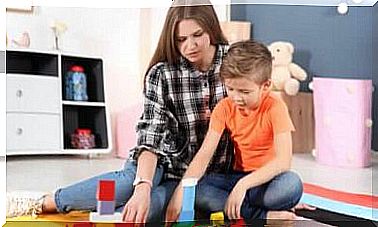Building Games And Their Application In Therapy

Lego and other building games have firmly established themselves in adult psychological therapy and in many business coaching processes . What started out as a game that fascinated children turned out to be a powerful tool in working with adults. The point is that when we think with our hands, we also exercise emotional intelligence – testing frustration tolerance, for example –, visual and kinesthetic intelligence.
This provides a lot of information about an individual’s personality, emotions, frustration tolerance, and conflict resolution skills. For all these reasons, construction games are often used in therapy, both individually and in groups. It is a pathway that helps develop emotional intelligence, creativity, empathy and other skills.
Building Games Therapies
The main speech-based psychological intervention model was the most traditional to date. In recent years, psychological therapy has evolved into expressive interventions such as play therapies or art therapies. These types of therapies aim to focus clients on exploring deeper perspectives. Construction game therapies are very effective for discovering unconscious content.
The case of the LEGO facilitator method, for example, consists of a highly structured innovative clinical process. There are several enabling Lego models. Lego Serious Play (LSP), which was initially used in business organizations, Six Bricks and Play Box, which were used for children’s development and learning. Furthermore, both have been generalized to various applications in education, family counseling and mental health.
Reading The Cult of LEGO book (Baichtal & Meno, 2011) is of special interest. This work describes Lego-based social development therapy at the New Jersey Center for Developmental Neurological and Neurological Health.

applications
Doctors of psychology Harn and Hsiao apply LSP therapy to help survivors of episodes of violence. They do this by rebuilding patients’ interpersonal trust. They also presented a report on the application of LPS therapy with the aim of reducing stress at work.
This type of therapy combines the Lego constructs with the facilitator’s questions. As such, the patient must follow the narrative rather than simply sharing personal information. On the other hand, the use of the Six Bricks model emerged as an effective method to promote the ability of language, cooperation and emotional mediation.
Both approaches are based on creating the positive emotion of building and expanding. They involve developing new skills and resources and helping to eliminate negative emotions. According to social psychologist Barbara Fredrickson, “playing” is the fastest mechanism for achieving positive emotions. Play is a scheme that individuals use to build.
The emotional transition brought about by creativity and fun helps patients restore their life stories and realize their own abilities and resources. Building game blocks may well symbolize the obstacles or limits of our own ideas. Thus, by using them to build, we promote the conversion of thought. In that sense, tasks with Six Bricks are simple but challenging.
coping with depression
In conventional therapies, patients with severe depression are often limited in their oral expression. However, through building game therapy, it’s easier to get the emotions out.
Furthermore, if the therapy takes place in a group, it offers the patient the opportunity to develop connections with other team members in positive social interaction. In short, this method uses emotion regulation and cognitive restructuring.

Building games and research
These construction games are also used in various psychological research studies. In 2011, cognitive psychologist David Whitebread conducted several studies on the relationship of these construction games to speech and self-regulation.
There is another ongoing study by Miles Richarson of the University of Derby. This team investigates skills in construction games as a predictor of math and spatial skills.
In the paper entitled The Ikea Effect: When Labor Leads to Love , the team led by Michael Norton investigated the counterintuitive notion that having to work hard to produce increases willingness to pay for it : consumers confer disproportionately higher value to products that they themselves contributed to create or manufacture. In this way, positive affection and emotional attachment to the constructed product are developed, allowing individuals to see themselves as competent beings.








